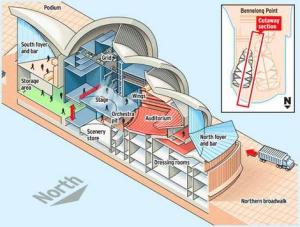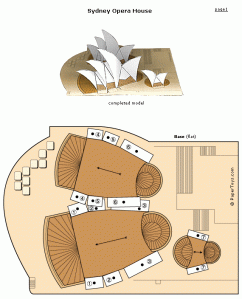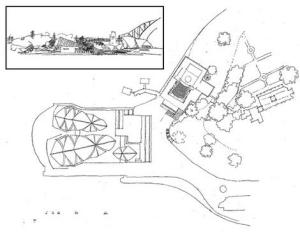Sydney Opera House is known as the functioning performing arts centre, tourist attraction and huge national asset. It is very important to keep demonstrating the optimal effectiveness of management to provide continuous value to the shareholders. I began to wonder what are the supports behind this remarkable structure and how is being integrated with modern IT technology?
The innovative technologies used in Sydney Opera House includes;
- Digital Modeling: also known as Information Business Modeling, allows the integration of information from various softwares and hard copy. Then combine it with CAD, Geographic information system (GIS). For more information on GIS, you can find it at the first blog post. It visualizes the building in 3D and added in information during each element. The model act as a team work with data and exchange them to make it more efficient and effective.
- Service Procurement: is complex in its diversity with multi criteria performance based framework working with the objectives from Facilities Management, to bring out services.
- Performance benchmarking: allows the organisations to draw performance indicators for ideas on current and future improvements.
“SOH see significant benefit in digitising its drawings and operation and maintenance manuals. Since SOH do not currently have digital models of the Opera House structure or other components, there is an opportunity for this national case study to promote the application of Digital Facility Modelling using standardized Building Information Models (BIM)”.
It is interesting to discover how important information technology is driven into property development sectors. In this case, Sydney Opera House (SOH) has been successfully adapted for the operation part of SOH with BIM supporting its back and there were only a little big of technical difficulties when converting the technology standards to new model environment. This has to thank for the IFC model in building data representation and management.
Now, what are the elements of the building information models at SOH?
The following areas includes;1. Re adapt the building information for management purposes.
2. Adapt the information model for FM using BIM
3. Using BIM to cope with business requirements
4. Standardized building models that created convenience for the future adjustments.
5. Drawing roadmap for SOH to integrate with BIM for FM in peace.
More over…
I think it is interesting to know what the actual contributions from BIM towards operations on SOH are; Robust Geometry where SOH is being described with accurate geometry for measurements. Comprehensive and extensible object properties that really bring out meaning of the object allowing the users to use it as a common format. Thus, can enrich the information on manufacture product code, cost, time and services. Semantic Richness; that brings different types of relationships between models and conduct interesting analysis. Integrated information where the model holds all kinds of information. And lastly, Life cycle supporting data over the facility life cycle all the way to demolition.
Related articles
- Opera House gets price tag for birthday (skynews.com.au)
- #BIM for beginners – What is #BIM ? (markstephensarchitects.com)


